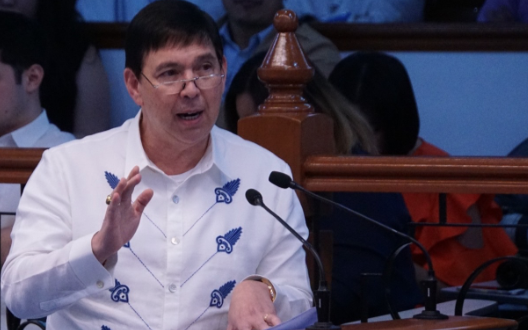Actual ’20 budget is P216 B higher, but unprogrammed part lacks details
While every literature states that P4.1 trillion is the national budget for 2020, in reality, it is not.
The real amount is P4,316.3 trillion, P216.3 billion higher than what is commonly stated.

The P216.3 billion represents the Unprogrammed Appropriations (UA). While the release of funds from this is governed by several “triggers”, the authority to spend it comes with the passage of the national budget.
Thus, P4.316 trillion is the implied ceiling of the proposed 2020 budget. Once the latter becomes law, it confers standby authority to the executive to spend it, provided conditions are met.
But barely discussed in this year’s budget preparation season is how the UA have been on steroids.
In just two years, it has grown in Incredible Hulk-like proportions and speed.
In 2016, the UA was P67.5 billion, the same amount in 2017. It nudged a bit to P75.3 billion in 2018. But 2019 saw it ballooning to P197.1 billion.
The hyperinflation continues next year with a UA amount of P216.3 billion.
The national budget can be broken down into two: the so-called “programmed” part (P4.1 trillion), and the “unprogrammed” (P216.3 billion). The former can be defined as funded appropriations, while the latter is conditioned on the availability of funds.
Under the fine print of the national budget, any amount in the UA can only be released if revenue collections exceed target, new sources of revenue are created, or when foreign loans or grants or borrowings are received. It can be likened to a parking mall of vehicles, each with a trip ticket to proceed but all waiting for fuel to arrive.
But the UA is also plagued by lack of transparency. It is not your ideal itemized section of the budget. Rather, large amounts are placed in generic boxes whose specifics lack elaboration.
For example, the biggest item in the UA is P90.4 billion for “Support to Foreign Assisted Projects.” It is bigger than the DOH agency budget for 2020. Kung para sa ano ito, hindi idinetalye sa National Expenditure Program (NEP). Parang cheke na may amount, pero walang particulars.
The next biggest is the P61.9 billion in “Budgetary Support to GOCCs”. Again, no itemization in the NEP.
The third is the P30 billion for the Risk Management Program. Here, at last, is a UA item with its purpose painted in broad but economical strokes. It is reserved for government commitments and agreements related to PPP projects, the names of which are, again, not specified.
But it will be wrong to say that all projects under UA are devoid of merit. In fact some are good, like the P5.4 billion for the Health Facilities Enhancement Program, the P5 billion for the Bangsamoro Normalization Program, the P5 billion for AFP Modernization.
Mayroon ding P2.4 billion para sa National ID Project. At P1.2 billion na bayad-utang sa ilang mga LGUs. Isang pang bayad-utang ay P2 billion sa previous IT contractor ng LTO.
We were able to pry from the executive the projects to be funded by the mega P90.3 billion for projects to be funded by foreign debt, and the P61.8 billion for select GOCCs.
The big ticket items in these two are:
1) P40.6 billion for the NFA where previous payments made by the government for its loans will be converted into subsidy; and
2) Five rail projects worth P75. 8 billion.
My point is that these particulars should be openly declared in the NEP, and not swept under innocuously-worded headings.
Because these involve large amounts, I would raise this issue during the plenary debates, so that whatever good they will bring will be conveyed to the public who will pay for them.

